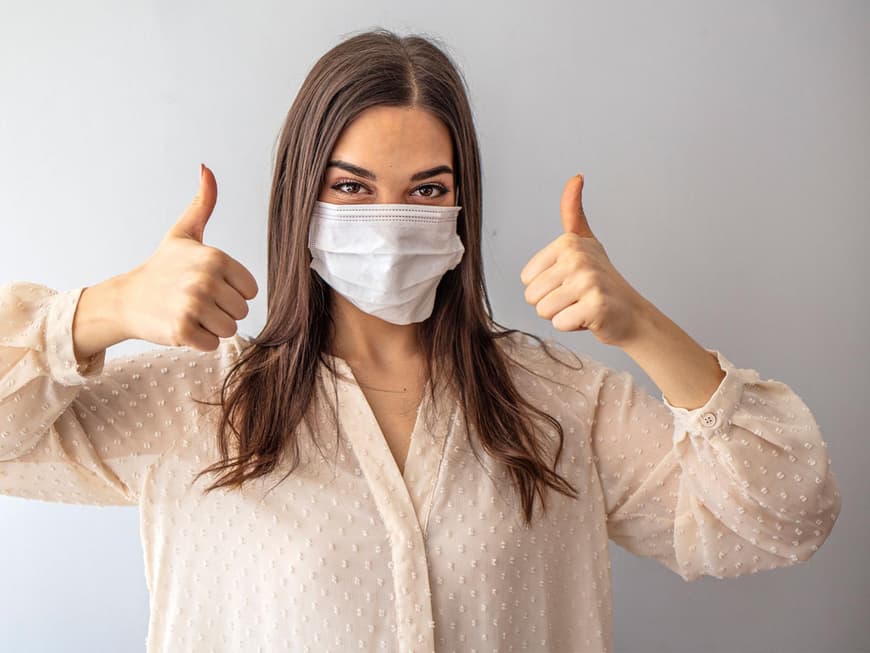
1. wear a fabric mask
The skin can generally breathe better under a fabric mask, which is why it should be the first choice. It should be removed every one to two hours to allow fresh air to reach the skin. This prevents spots and blemishes.
Sew your own fabric masks - here's how
2. apply cream to the skin
The heat behind the protective mask creates germs that can cause spots or blemishes. A moisturizer protects the skin as it acts as a barrier. From a medical point of view, men who normally refuse to use creams on their face should now also use a light moisturizer.
3. avoid make-up
Apart from the fact that you can't see any elaborate make-up or perhaps even countouring behind the mask anyway, thick layers of make-up behind the mask are poison for the skin. It needs all the air it can get to breathe - this is the only way to prevent spots or blemishes from forming. As mentioned above, use a light day cream, which can also be tinted. Of course, you can still wear mascara and eyeshadow and highlight your eyebrows.
4. cleanse the mask - but how?
It is definitely gentler on the skin if the mask is washed by hand or on a gentle wash cycle. Why? If the material becomes rough, this can cause pure stress for the skin - it feels like it is under a permanent peeling and can react with irritation. For hygienic reasons, however, fabric masks should be washed in hot water so that cream residues and impurities from the environment are regularly removed. Our extra tip: simply replace fabric masks completely more often.
Date: 12.05.2020
Author: Tanja Seiffert
